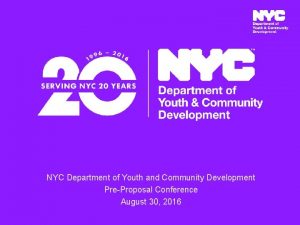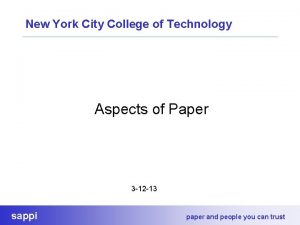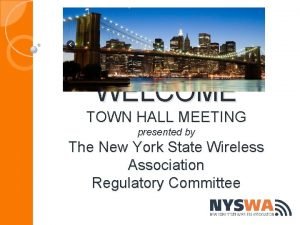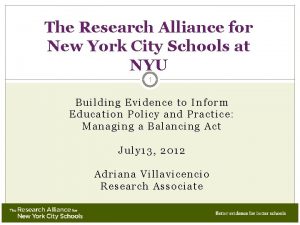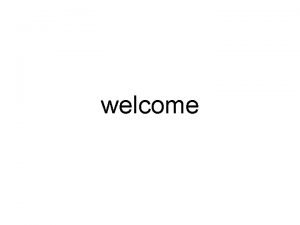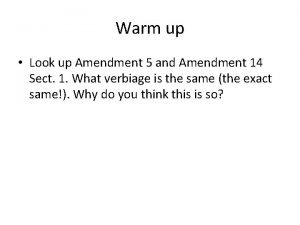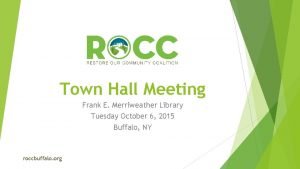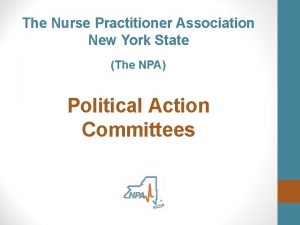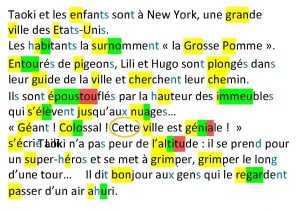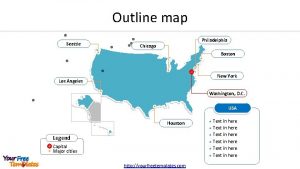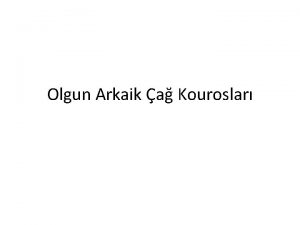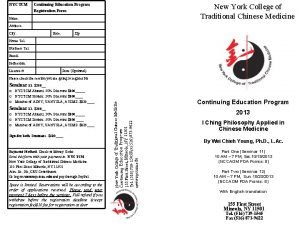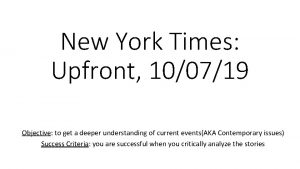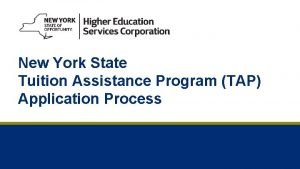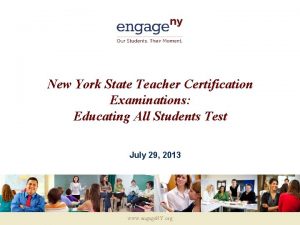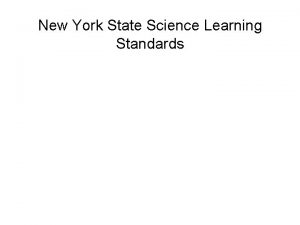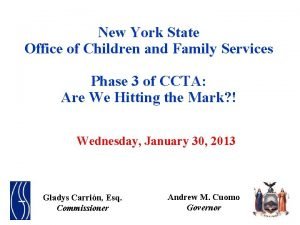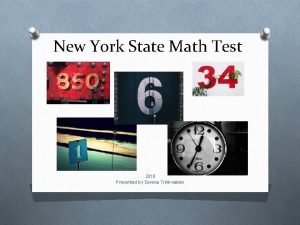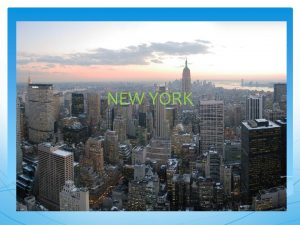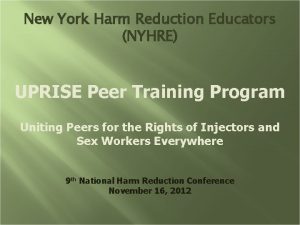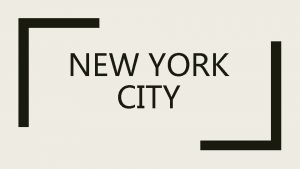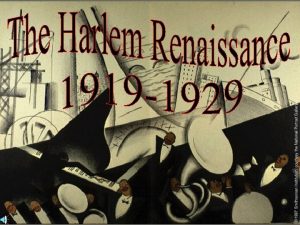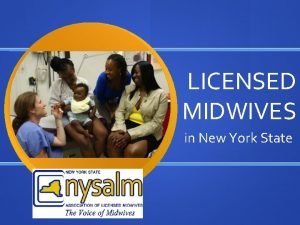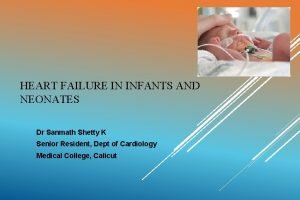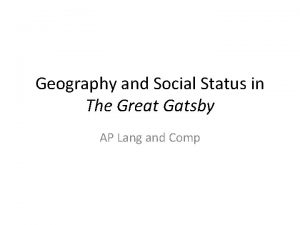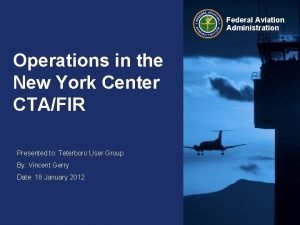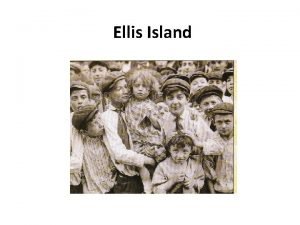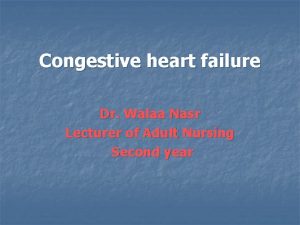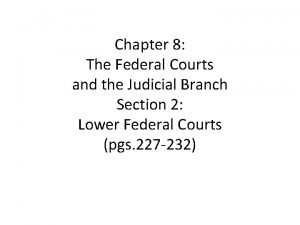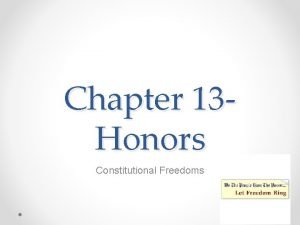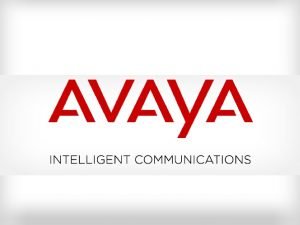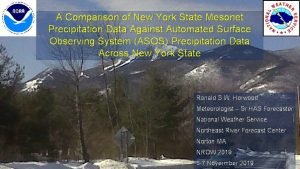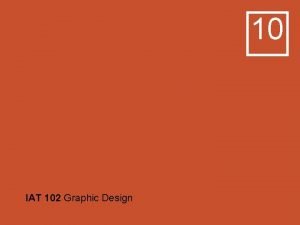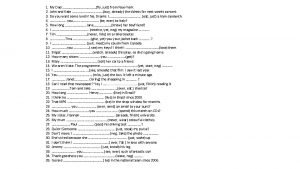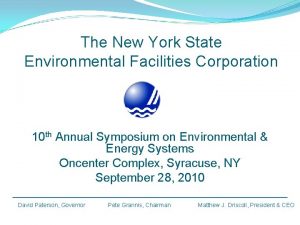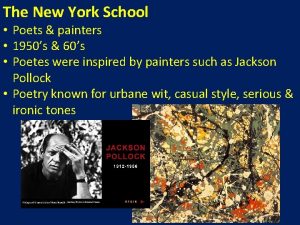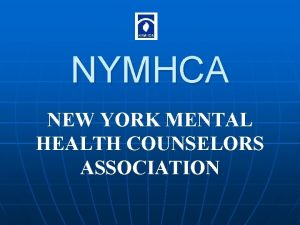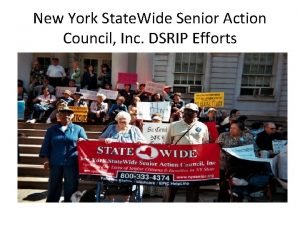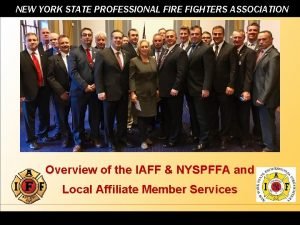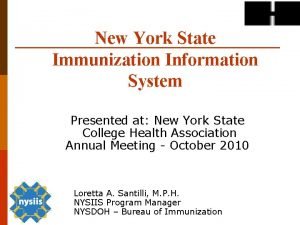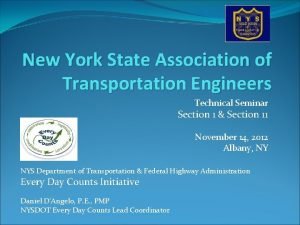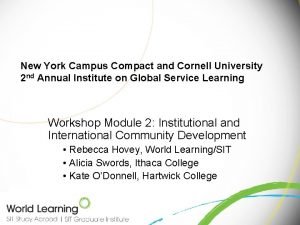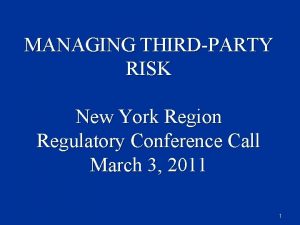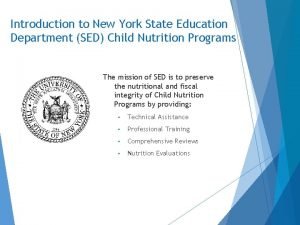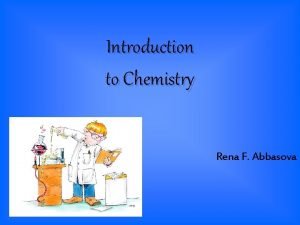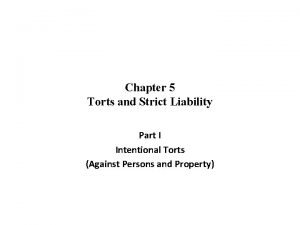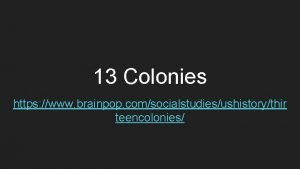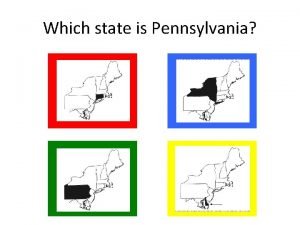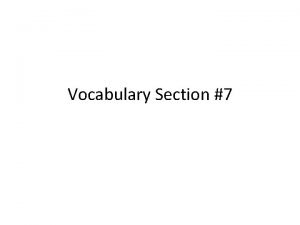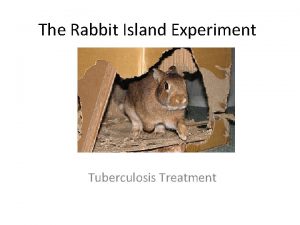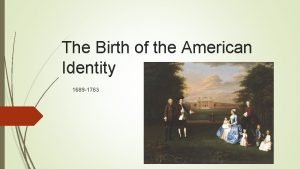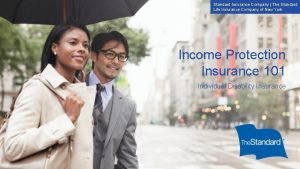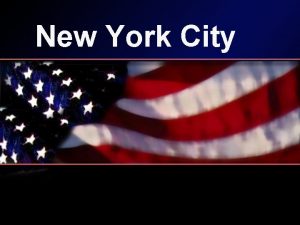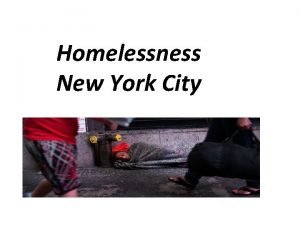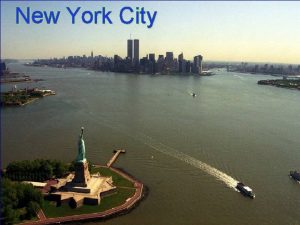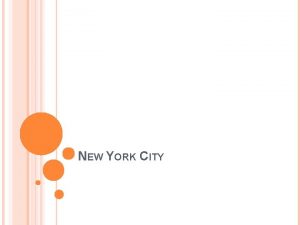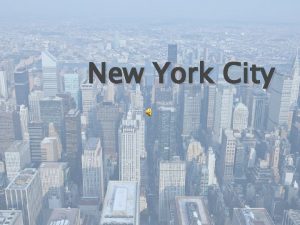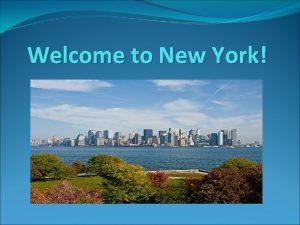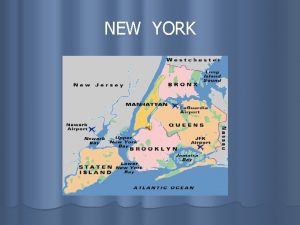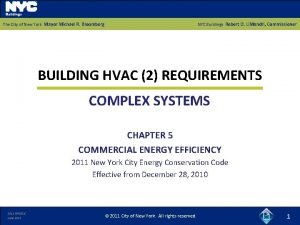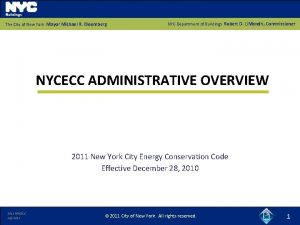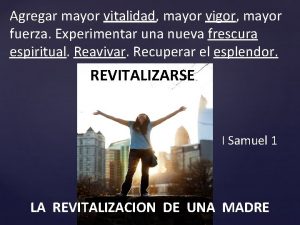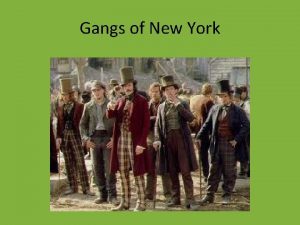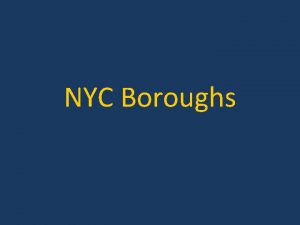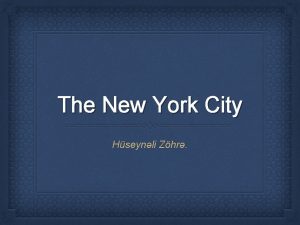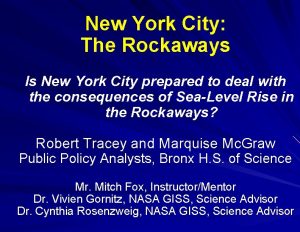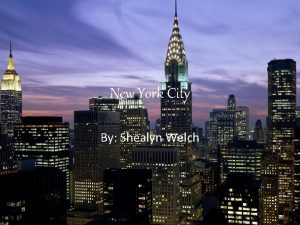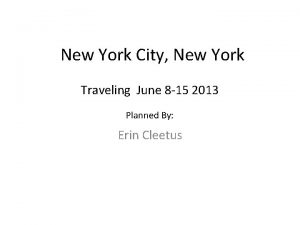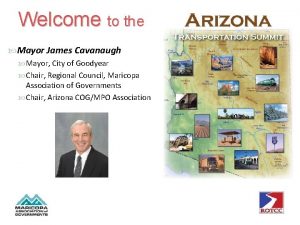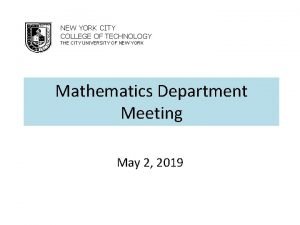The City of New York Mayor Michael R









































































- Slides: 73

The City of New York Mayor Michael R. Bloomberg NYC Department of Buildings Robert D. Li. Mandri, Commissioner NYCECC ADMINISTRATIVE OVERVIEW 2011 New York City Energy Conservation Code Effective December 28, 2010 2011 NYCECC July 2011 © 2011 City of New York. All rights reserved. 1

Acknowledgements The New York City Department of Buildings wishes to acknowledge the generous grant from the United States Department of Energy under the American Recovery and Reinvestment Act, enacted by President Obama and Congress in 2009. This grant funded the creation of these training modules; without this support, these materials would not have been possible. We also wish to acknowledge the support of Mayor Bloomberg and the New York City Council who created Pla. NYC 2030, with a goal of reducing New York City’s carbon emissions by 30% by 2030, from 2005 levels. 2011 NYCECC July 2011 2

Copyright Materials NYCECC Administrative Overview © 2011 City of New York. All rights reserved. Permission is granted for the noncommercial use and reproduction of this presentation, without alteration, for educational purposes. This training module was developed by: 2011 NYCECC July 2011 3

Introduction Welcome to the New York City Department of Buildings Energy Code Training Modules! This ADMINISTRATIVE OVERVIEW Module addresses: q q q Current Laws, Rules, and Bulletins related to the 2011 NYCECC; Applicability of the 2011 NYCECC; Methods of Compliance; NYC DOB Energy Code Submission Requirements; and NYC DOB Progress Inspection Requirements. This module provides an overview of the use and applicability of the 2011 NYCECC. Technical issues related to NYCECC compliance, plus additional examples of NYCECC documentation, are included within the Envelope, HVAC (1&2), Lighting, and Residential Energy Code Training Modules in this series. 2011 NYCECC July 2011 4

Training Module Organization Introduction q q q 2011 NYCECC July 2011 Overview The ADMINISTRATIVE OVERVIEW Module has been divided into a number of smaller sub-topics. These can be accessed either insequence or out-of-sequence through links in the Main Menu slide. Each sub-topic begins with a brief overview of the issues to be reviewed, and many end with a set of summary questions. Many of the sub-topics are organized in a Q & A format. Code-related questions are posed at the top of a slide, with answers provided below, or in the following sequence of slides. 5

Slide Navigation Guide Introduction Look for the following icons: The NYC Buildings logo takes you to the NYCECC 2011 Training Modules home page. The Menu icon takes you to the main menu page within each module. The Attention icon brings up Callouts with key points and additional information. The slides are enhanced with special icons that will help to The Links icon takes you to related DOB web pages or other resources. focus on key points, or serve as links to external resources. The Attention icon brings up Callouts (like this one) with key points and additional information. The Documentation icon addresses DOB documentation issues and requirements. The Inspection icon addresses DOB Progress Inspection issues and requirements. The Code Reference icon refers to relevant Code sections. 2011 NYCECC July 2011 6

Administrative Overview Module Menu Slide Navigation Click on a sub-module to navigate directly to corresponding slides The main menu slide is interactive; clicking on each line item will take you to the respective sub-module. Use this feature to navigate throughout the presentation. The menu icon at the bottom right corner of each slide will always bring the you back to the main menu slide. 2011 NYCECC July 2011 7

NYCECC Administrative Overview Slides 8 to 16 2011 NYCECC July 2011 1. What’s New in the 2011 NYCECC 8

1. What’s New in the NYCECC Overview In this section you will learn about: 2011 NYCECC July 2011 q What’s driving the recent changes to the NYCECC; q Key changes and additions in the 2011 NYCECC; q Current NYC Local Laws affecting Energy Code compliance; and q Current Rules and Bulletins affecting Energy Code compliance. 9

The 2011 NYCECC 1. What’s New What’s Driving the Recent Changes to the Energy Code? ? City-wide Focus on Energy and Greenhouse Gas (GHG) Reductions q Mayor Bloomberg’s Pla. NYC (2007) ► Targets 30% Reductions in GHG by 2030 ► Local Laws were enacted, including: » » » LL 84 of 2009 – Benchmarking Energy & Water Use LL 85 of 2009 – Established the 2009 NYCECC LL 1 of 2011 – Established the current 2011 NYCECC LL 87 of 2009 – Audits & Retro-Commissioning LL 88 of 2009 – Lighting Upgrades / Sub-meters Federal Mandates q American Recovery & Reinvestment Act (ARRA) Funding ► ► 2011 NYCECC July 2011 Requires States to enact Energy Codes equivalent to IECC 2009 and ANSI/ASHRAE/IESNA 90. 1 -2007 In receiving ARRA funding, New York State agreed to meet the federal mandate of achieving Energy Code compliance in 90% of new and renovated building space by 2017. Requires States to achieve 90% Energy Code compliance by 2017 10

Key Updates for the 2011 NYCECC 1. What’s New What are the Major Changes in the New Code? ? Simplified, Streamlined & More Comprehensive q q ALL new buildings, renovations, alterations & repairs are required to comply Climate zone classifications are simplified ► q Commercial building definition (Group R) expanded ► q Single zone for all NYC boroughs, both residential & commercial (Zone 4 A) Now includes Group R-3 over 3 stories Commercial projects can use ASHRAE 90. 1 -2007 as an alternative path to NYCECC Chapter 5, though it must be used for ALL disciplines: ► ► 2011 NYCECC July 2011 Envelope, Mechanical Systems, Service Water Heating, Electric Power & Lighting Chapters 1, 2, 3, & 6 of the NYCECC apply in either approach 11

Key Updates for the 2011 NYCECC 1. What’s New What are the Major Changes in the New Code? ? Simplified, Streamlined & More Comprehensive q Additional topic-specific updates are addressed in the following DOB NYCECC training modules: 2011 NYCECC July 2011 12

Local Laws - 1 1. What’s New What Local Laws are Associated with the NYCECC? ? Local Law 1 of 2011 q q Establishes the 2011 NYCECC based on the 2010 ECCCNYS Went into effect December 28, 2010 Energy Conservation Construction Code of New York State Local Law 85 of 2009 (superseded in entirety by LL 1/2011) q q Established the 2009 NYCECC based on the 2007 ECCCNYS Removed exemptions for envelope additions, alterations and repairs that affect less than 50% of a system Established NYCECC documentation requirements Went into effect July 1, 2010 2011 NYCECC July 2011 13

Local Laws - 2 1. What’s New What Local Laws are Associated with the NYCECC? ? Local Law 48 of 2010 q q Amends Section 505 of the NYCECC Adds Appendix A amending ASHRAE 90. 1/2007, Section 9 ► Shutoff-only occupancy sensors now required for: » » 2011 NYCECC July 2011 Classrooms (excluding shop, laboratory, or preschool classrooms) Conference/meeting rooms Employee lunch and break rooms Offices smaller than 200 SF (unless the offices have lighting controlled with photo-sensor) 14

Rules 1. What’s New What Rules of the City of New York are Associated with the NYCECC? ? 1 RCNY § 5000 -01 q q Defines Energy Code submission procedures Defines the requirements for project progress inspections in the construction drawings 1 RCNY § 101 -07 q q Requirement that owner retain progress inspector(s) Defines general sampling rate of inspections ► q q 15% of each relevant construction item in the scope of work, unless otherwise noted in 1 RCNY § 5000 -01, or required by progress inspector Defines authority and responsibilities of the progress inspector Addresses additional Energy Code verification issues 2011 NYCECC July 2011 These issues include: • Phased inspection for temporary certificates of occupancy; • Phased inspection controls; and • Lighting power densities. 15

Bulletins 1. What’s New What DOB Bulletins are Associated with the NYCECC? ? Buildings Bulletin 2010– 031 q Outlines conditions under which an addition, alteration, renovation, or repair to an HVAC or service hot water system may not be required to comply with the Energy Code. Buildings Bulletin 2010– 032 q Outlines conditions under which an addition, alteration, renovation, or repair to a lighting or electrical power system, or control equipment, may not be required to comply with the Energy Code. Buildings Bulletin 2011– 015 q Outlines conditions under which an addition, alteration, renovation, or repair to a building envelope may not be required to comply with the Energy Code. 2011 NYCECC July 2011 16

NYCECC Administrative Overview Slides 17 to 23 2. Code Applicability Photo: Comstock / Jupiter Images 2011 NYCECC July 2011 17

2. Code Applicability Overview In this section you will learn about: q DOB terminology related to NYCECC applicability, including: ► Differences among Code, Rules, and Bulletins ► Differences between Exemptions and Exceptions ► q 2011 NYCECC July 2011 Differences in applicability for New Construction, Additions, Alterations, Renovations, and Repairs Applicable Chapters of the NYCECC for different building types 18

General Terminology - 1 2. Code Applicability ? What is the Terminology Used by DOB Related to Code Applicability? The Code: q q The NYCECC is law. It applies to all buildings, new and existing, unless explicitly stated otherwise. Rules: q q q Rules are prepared by the DOB to implement the Code. Rules must go through a formal administrative public comment process. Rules have the force of law. Bulletins: q q Bulletins are issued by the DOB, in part to clarify interpretations of the codes. They may change more frequently than laws or rules. The DOB website is always updated to reflect all changes to laws, rules and bulletins. Check the website frequently. 2011 NYCECC July 2011 19

General Terminology - 2 2. Code Applicability ? What is the Terminology Used by DOB Related to Code Applicability? Exemptions: q q Exemptions define specific building types or building elements that are not required to meet the Code, and are addressed in the PW 1 form when they constitute the entire application. The following are the only allowed exemptions to the NYCECC: ► Historic buildings (per NYCECC 101. 4. 2, § 5000 -01) » » ► ► ► National-or State-designated historic buildings Buildings certified as contributing buildings within a National or State historic district Buildings certified as eligible for the designations above City level certification does not qualify for exemptions The envelopes of low-energy buildings (buildings with peak design rate of energy use <3. 4 Btu/h/SF, or unconditioned buildings) Temporary buildings under § 28 -111 and §BC 3203 The following work types, which are categorized as not affecting energy use: » FA (fire alarm), FP (fire suppression in a range hood), SD (standpipe), SP (sprinklers), FS (fuel storage), EQ (construction equipment), CC (curb cut), OT/BPP (Builder’s Pavement Plan), OT/FPP (Fire Protection Plan) 2011 NYCECC July 2011 Historic Buildings: NYCECC: 101. 4. 3, LL 01 of 2011, § 5000 -1; Low Energy Buildings: NYCECC 101. 5. 2 20

General Terminology - 3 2. Code Applicability ? What is the Terminology Used by DOB Related to Code Applicability? Exceptions: q Exceptions are conditions under which specific provisions of the Code may not be required. ► q Exceptions specifically applicable to Alterations are defined in Chapter 1 NYCECC § 101. 4. 3 ► q Many exceptions are defined under Chapter 4 and Chapter 5 NYCECC. These types of exceptions typically define NYCECC “alternates”; i. e. , a system requirement may not be required if other alternative measures are incorporated. These apply only if they do not result in increased energy use of the building. Clarifications of potential exceptions in additions, alterations/renovations, and repairs are provided in Building Bulletins 2010– 031, 2010 -032, and 2011– 015 2011 NYCECC July 2011 Exemptions, exceptions and other conditions relieved from compliance by Section NYCECC 101. 4. 3 must be identified in the submitted Energy Analysis, with citations to Code, 1 RCNY § 5000 -01 and/or Bulletins provided. 21

Applicability for Different Scopes of Work 2. Code Applicability New Buildings q q All must comply via Prescriptive or Performance-Based Approaches (see topic 3 of this module) Only exemption is for envelope in low-energy/unconditioned buildings For example, where an alteration, renovation or repair involves replacement of over 50% of the existing luminaires, the entire scope of work q Must comply as a stand-alone addition or with the building as a single entity must meet the current NYCECC lighting provisions, as applicable. Additions Alterations / Renovations q q Only applies to scope of alteration work; unaltered portions are not required to comply Some exceptions may apply (per Bulletins) Repairs q Technically applies even if a permit is not required (e. g. , window or roof replacements or repairs) 2011 NYCECC July 2011 22

Applicability by Building Type 2. Code Applicability ? Which Chapters of the Code Apply to Different Building Types? Residential R-3 (detached one-and twofamily dwellings, and multiple single-family dwellings) AND R-2 (Multifamily > 2 -family ) ≤ 3 stories AND Manufactured Homes Factory-Manufactured Homes Residential NYCECC Chapter 4 2011 NYCECC July 2011 Group R Buildings R-1 (Hotels/motels) any height AND R-2 (Multifamily > 2 -family ) > 3 stories AND R-3 (One & Two Family) > 3 stories All Other Buildings (Including Group I, H) Commercial NYCECC Chapter 5 Mixed use: 101. 5; Definitions of Residential, Commercial & Group-R: 202 23

NYCECC Administrative Overview Slides 24 to 38 2011 NYCECC July 2011 3. Methods of Compliance 24

3. Methods of Compliance Overview In this section you will learn about: q Mandatory Provisions of the NYCECC; q Prescriptive Versus Performance-based Compliance Paths; and q 2011 NYCECC July 2011 Using the ANSI/ASHRAE/IESNA Standard 90. 1 -2007 Instead of NYCECC Chapter 5. 25

Code Structure 3. Methods of Compliance Mandatory Requirements May include design features & construction practices + Prescriptive or Performance Targets Minimum criteria apply at the component, system, or whole building level Trade-offs allowed, depending It is important to understand the basic structure of the NOT subject to Trade-offs Energy Code. on compliance path Mandatory requirements are defined throughout Chapters 4 and 5 of the NYCECC, and are not subject to any type of Trade-off. Compliance Paths: Requirements Common Additional NYCECC provisions can be satisfied through Prescriptive / Trade-off / to all Compliance Paths Prescriptive compliance, Trade-offs, or a Performancebased approach. Performance-based The following slides describe each type of NYCECC provision in more detail. 2011 NYCECC July 2011 26

Mandatory Requirements - 1 3. Methods of Compliance ? What are Examples of NYCECC Mandatory Requirements? Residential (NYCECC Chapter 4) q Air Sealing ► Air tightness of the envelope shall be verified by either: » Building testing (e. g. blower door), or » Visual inspections during construction q Systems ► q Programmable thermostats per dwelling unit Lighting and Electrical At least 50% of lamps in permanently installed fixtures shall be high-efficacy ► Separately meter individual dwelling units Envelope (NYCECC Chapter 5) ► q Air Leakage ► Includes provisions for: » » » 2011 NYCECC July 2011 Maximum allowable leakage of window, storefront, curtainwall, and door assemblies Continuous air barriers Outdoor air intakes and exhaust openings Loading dock weatherseals Vestibules Recessed lighting 27

Mandatory Requirements - 2 3. Methods of Compliance ? What are Examples of NYCECC Mandatory Requirements? Electrical Power / Lighting (NYCECC Chapter 5) q Lighting Controls ► ► q Exit Signs ► q Areas enclosed by walls or floor-to-ceiling partitions must have at least one manual control Areas required to have a manual control shall also allow the occupant to reduce the connected lighting load by at least 50% Internally illuminated exit signs shall not exceed 5 watts per side Electrical Energy Consumption ► Residential buildings shall make provisions to separately meter individual dwellings HVAC (NYCECC Chapter 5) q Provisions for all systems include: ► ► Minimum Heating & Air Conditioning equipment efficiencies Thermostatic controls, including setback capabilities Pipe insulation and duct insulation/sealing When specific building conditions exist: » Demand Control ventilation » Energy Recovery ventilation systems 2011 NYCECC July 2011 28

Compliance Paths 3. Methods of Compliance Options: 2011 NYCECC offers three compliance methods: 1. Prescriptive ► Through summary tables and other listed provisions 2. Trade-off ► For envelope assemblies through U-Factor approach or REScheck /COMcheck 3. Performance-based ► Through energy modeling Code also allows use of the ANSI/ASHRAE/IESNA 90. 1 -2007 standard (“ASHRAE 90. 1”) as an alternative to NYCECC Chapter 5 ► ASHRAE 90. 1 also offers Prescriptive, Trade-off & Performance Paths 2011 NYCECC July 2011 29

Path 1: Prescriptive 3. Methods of Compliance Prescriptive Path Pros q Interior Lighting Power Allowances Typically the simplest approach to demonstrate compliance Cons q q Lack of flexibility - Each space, assembly or piece of equipment must meet or exceed the prescribed criteria The level of stringency of some prescriptive criteria may create design challenges ► 2011 NYCECC July 2011 Example: Prescribed Interior Lighting Power densities (based on Building Area Type) may be challenging for projects with a high percentage of conference rooms or other specialty spaces with higher lighting requirements. Lighting Power Density Building Area Type (W/ft 2) Convention Center 1. 2 Dining: Cafeteria /Fast Food 1. 4 Gymnasium 1. 1 Office 1. 0 Retail 1. 5 Parking Garage 0. 3 Partial Listing of prescriptive interior lighting power allowances (from NYCECC Table 502. 5. 2) 30

Path 2: Trade-Off (Envelope Only) 3. Methods of Compliance Trade-Off Path Pros q Level of Effort: Simple to Moderate q Prerequisites: ► ► q Window to Wall area Ratio ≤ 40% Skylight to Roof area Ratio ≤ 3% The “UA” approach involves multiplying the UFactor of a building assembly (such as a wall or roof type) by the area of that assembly. When multiple assemblies are used in a project, a weighted average of the “UA” of each assembly type can be calculated to demonstrate overall compliance with the NYCECC. Compliance is demonstrated through a U-Factor-based “Total UA” approach ► Weighted average value per component type is allowed » Example: Non-compliance in one roof assembly can be compensated for by using more insulation in another roof assembly q If REScheck or COMcheck is used, Trade-offs can be performed among different envelope components (roofs, walls, fenestration) Cons q There are some limitations to the Trade-off approach. In residential construction, an applicant cannot exceed U-Factor calculations can become complex in some assembly types, such as maximum allowed U-factors for vertical fenestration (0. 48) metal buildings or skylights (0. 75) in Zone 4. 2011 NYCECC July 2011 31

Path 2: Trade-Off – COMcheck Example 3. Methods of Compliance Trade-Off Path Using COMcheck In this non-residential COMcheck example, the roof insulation R-Value is below the prescriptive requirement of R-20; however overall envelope compliance has been achieved through improved performance of the exterior walls, windows, and doors. 2011 NYCECC July 2011 32

Path 3: Total Building Performance 3. Methods of Compliance Performance Path Approach: q Energy Modeling, per Section NYCECC 506 or the Energy Cost Budget Method from ASHRAE 90. 1, is used to demonstrate that: Total Annual Energy Cost of the Proposed Building Design is less than or equal to Total Annual Energy Cost of the Budget Building Design q For residential buildings, the Simulated Performance Alternative (Section NYCECC 404) can potentially be used, but must be approved in advance by the DOB Commissioner. ► 2011 NYCECC July 2011 Home energy software programs must also be approved by both the Secretary of State of New York State and the DOB Commissioner. (DOE 2 -based software has such approval. ) 33

Path 3: Total Building Performance 3. Methods of Compliance Performance Path Pros q The most flexible approach ► Cons q q Aspects of the design which do not meet Prescriptive criteria (other than Mandatory provisions) can be Traded-off against measures that exceed Code criteria Level of effort is high, with associated costs The learning curve for energy modeling is steep ► 2011 NYCECC July 2011 Modeling is often performed by consulting engineers or specialized consultants 34

Path 3: Total Building Performance 3. Methods of Compliance ? When Would a Project Pursue the Total Building Performance Approach? Sample Scenarios q Fenestration area exceeds 40% of wall or 3% of roof q Project exceeds prescriptive interior Lighting Power Densities q Project is making Trade-offs among disciplines (e. g. , envelope, lighting, HVAC) q Project is pursuing a LEED rating, and requires energy modeling q Project is pursuing energy-efficiency rebates (e. g. , NYSERDA, Con Edison), and requires energy modeling for those programs 2011 NYCECC July 2011 35

ANSI/ASHRAE/IESNA 90. 1 - 2007 3. Methods of Compliance ? When Would ASHRAE 90. 1 be Used to Demonstrate Compliance? Applicability: q ASHRAE 90. 1 is an approved alternative to Chapter 5 of the NYCECC q If used, ASHRAE 90. 1 must be followed and applied in its entirety ► q Applicants cannot mix compliance of one discipline in the NYCECC with another discipline in ASHRAE-90. 1 Prescriptive, Trade-off, or Performance-based paths can be used 2011 NYCECC July 2011 36

ANSI/ASHRAE/IESNA 90. 1 - 2007 3. Methods of Compliance ? When Would ASHRAE 90. 1 be Used to Demonstrate Compliance? Potential Reasons to Use ASHRAE 90. 1: q A space-by-space lighting approach is allowed ► q Skylight requirements are more lenient ► ► q q q May result in higher lighting power density allowances versus the Building Area method of the NYCECC Area can be up to 5% to stay in Prescriptive / Trade-off method instead of 3% in NYCECC U-Factor requirements are more lenient for commercial buildings Shading devices in ASHRAE have more options – partial opaque materials and multiple Projection Factors ASHRAE 90. 1 is more commonly used than the NYCECC for performance-based modeling Programs such as LEED, NYSERDA rebates, and federal tax credits are based on ASHRAE 90. 1 2011 NYCECC July 2011 37

ANSI/ASHRAE/IESNA 90. 1 - 2007 3. Methods of Compliance ? What are the Difficulties of Using ASHRAE vs. the NYCECC? More Extensive Mandatory Provisions: q Power, Section 8. 4, has maximum voltage drop requirements for main feeders (2%) and branch circuits (3%) ASHRAE 90. 1 does include some provisions that are not included in the NYCECC. If an applicant uses ASHRAE 90. 1 for compliance, they must meet all provisions of the standard, including mandatory provisions. One key mandatory provision in 90. 1 involves maximum voltage drops for main feeders and branch circuits. These requirements may result in heavier-gauge feeders, which could add significant costs to certain project types. 2011 NYCECC July 2011 38

NYCECC Administrative Overview Slides 39 to 69 4. Submissions & Inspections Photo: US DOE Building Energy Codes University 2011 NYCECC July 2011 39

4. Submissions & Inspections Overview In this section you will learn about: q Requirements for NYCECC Submissions, including: ► ► ► q 2011 NYCECC July 2011 Professional Statement and Owner Statement; Energy Analysis; and Supporting documentation. Requirements for NYCECC-related Progress Inspections 40

NYCECC and Applications 4. Submissions & Inspections ? What are the Application Requirements Related to the NYCECC? Per 1 RCNY § 5000 -01: q Professional Statement q Owner Statement q Energy Analysis q 2011 NYCECC July 2011 Supporting Documentation, including requirement for progress inspections in drawings 41

Professional Statement / Owner Statement 4. Submissions & Inspections ? What is Required for the Professional and Owner Statement? Professional Statement q Completed under Section 10 of Form PW 1 ► Declares either compliance with, or exemption from, the NYCECC Owner Statement q Completed under Section 26 of Form PW 1 ► 2011 NYCECC July 2011 Declares that the Owner does not knowingly authorize work that fails to comply 42

PW 1 – Professional Statement 4. Submissions & Inspections 2011 NYCECC July 2011 43

PW 1 – Owner Statement 4. Submissions & Inspections 2011 NYCECC July 2011 44

NYCECC and Applications 4. Submissions & Inspections Key Considerations Related Applications q In section 11 of the PW 1 form, all applicants must indicate all applications related to the project or, if an application has not yet been filed, the name of the applicant or the applicant’s firm and discipline for any anticipated, related applications. This is important for projects that file multiple applications, such as: ► ► A separate foundations package, earlier in the project. Later lighting and HVAC packages. Separate applications can include the part Energy Analysis of just their respective system in their drawings, such as the insulation values associated with foundation work, but only if they are all filed under one application number. 2011 NYCECC July 2011 45

Energy Analysis 4. Submissions & Inspections ? What Types of Energy Analysis are Allowed? Per 1 RCNY § 5000 -01: q Tabular Analysis q REScheck or COMcheck software q Energy Modeling q Alternative Formats 2011 NYCECC July 2011 46

Energy Analysis 4. Submissions & Inspections Option 1: Tabular Analysis q 2011 NYCECC July 2011 The Tabular Analysis compares proposed values of each NYCECC-regulated item in the scope of work with the respective prescriptive values required by the Code. ► Applicable to New Buildings, Additions, or Alterations ► Demonstrates Prescriptive Compliance ► Can be used with either NYCECC or ASHRAE 90. 1 47

Sample Tabular Analysis - 1 4. Submissions & Inspections ITEM DESCRIPTION Examples of Tabular Analysis for Commercial Building Alterations PROPOSED DESIGN VALUE CODE PRESCRIPTIVE VALUE AND CITATION SUPPORTING DOCUMENTATION BUILDING ENVELOPE Replace roof membrane and add insulation SRR = 2. 2% Roof Type 1: Minimum R-20 continuous 4” XPS (R -20) continuous Applicants must include reference to insulation above deck NYCECC Table 502. 2(1) the applicable Supporting Roof Type 1: A-106 (Roof Plan) A-402 (Wall Sections) 6 -8/A-603 (Roof Details) Window Type A: U = 0. 46, SHGC = 0. 29, Air leakage ≤ 0. 10 cfm/SF Window Types A-D: A-301 -302 (Elevations) A-501 (Schedules) Replace existing windows w/new aluminum framed windows, Floors 2 - 4 WWR = 32% PF = 0 Documentation for EACH item within Window Types A-D: the Tabular Analysis. Window Types B + C: U = 0. 41, SHGC = 0. 31, Air leakage ≤ 0. 30 cfm/SF Window Type D: U = 0. 41, SHGC = 0. 23, Air leakage ≤ 0. 30 cfm/SF Renovate interior side of exterior walls around new window openings – repair/replace gwb 2011 NYCECC July 2011 N/A - No change proposed to existing 3 ½” metal stud furring walls which are completely filled with fiberglass batts (estimated R-3. 1/inch). Maximum U-Factor = 0. 55 Maximum SHGC = 0. 40 NYCECC Table 502. 3 Maximum Air Leakage = 0. 3 cfm/SF NYCECC 502. 4. 1 NYCECC 101. 4. 3 Exception 3 – Alterations, renovations, or repairs to roof/ceiling, wall, or floor cavities which are insulated to full depth with insulation having a minimal nominal value of R-3. 0/inch. A-102 -104 (Floor Plans) 1 -2/A-305 (Interior Elevations) 48

Energy Analysis 4. Submissions & Inspections Option 2: REScheck or COMcheck submissions q REScheck and COMcheck software, available for free from the US Department of Energy, can be used to prepare Energy Code compliance calculations. ► ► ► 2011 NYCECC July 2011 Demonstrates Prescriptive Compliance OR Allows Trade-Offs among different envelope assemblies (roofs, walls, glazings, etc. ) Only ECCCNYS-2010 REScheck forms are permitted (not IECC) Only ECCCNYS-2010 or ASHRAE-90. 1, 2007 COMcheck forms are permitted (not IECC) 49

Energy Analysis 4. Submissions & Inspections Option 2: REScheck or COMcheck submissions (continued) COMcheck is applicable to New Buildings, Additions, or Alterations. q ► ► ► Additions can be submitted as stand-alone projects, or within a whole -building assessment Alterations can only be assessed under the ASHRAE 90. 1 -2007 compliance path, not under the 2010 ECCCNYS path Alterations can be submitted using one of two options: » As a stand-alone alteration, which applies only to the work being altered. The COMcheck assessment shall be based on the “alteration” option. » In a whole-building assessment, using as-built values for the project’s unaltered portions. REScheck is applicable to New Buildings or Additions/Alterations. q ► ► q 2011 NYCECC July 2011 Additions can be submitted as stand-alone projects, or within a whole-building assessment Alterations cannot be submitted as stand-alone projects in REScheck – they must be part of a whole-building assessment, using as-built values for the unaltered portions of the project Downloads: http: //www. energycodes. gov/software. stm 50

Sample COMcheck Input Screen 4. Submissions & Inspections All Wall Types, Roof Types, Fenestration Types, and Door Types in the COMcheck analysis should use the same nomenclature as those shown in the Supporting Documentation (Drawings & Schedules). 2011 NYCECC July 2011 51

Sample COMcheck Report 4. Submissions & Inspections A. Sign and seal the sheet with the Energy Analysis only at the Title Block when: • • • A lead professional signs and seals for the entire project. All applications related to the project share one application number, include the respective parts of the Energy Analysis in the discipline drawings, and the partial Energy Analysis represents the work of only that discipline. All applications related to the project have different application numbers, present all parts of the Energy Analysis in the initial application as required, but each part is located on a separate drawing sheet with only the work of that discipline. B. Sign and seal each part of the Energy Analysis on the partial Energy Analysis, and do not sign at the Title Block, when: • • 2011 NYCECC July 2011 All applications related to the project have different application numbers, present all parts of the Energy Analysis in the initial application as required, and all parts on one sheet; and No other work may be included on the sheet. 52

Energy Analysis 4. Submissions & Inspections Option 3: Energy Cost Budget Worksheet q Either NYCECC Section 506 or the Energy Cost Budget Method of ASHRAE 90. 1, 2007 can be used to demonstrate compliance. ► ► 2011 NYCECC July 2011 Applicable to New Buildings, Additions, or Alterations Requires computer energy modeling, using software programs approved by the Secretary of State of New York State and the NYC Commissioner of Buildings (e. g. , DOE-2. 1 E, Visual. DOE, Energy Plus, e. Quest) Compliance is demonstrated using the EN 1 form If changes occur during project execution, then energy model must be updated to as -built condition and the results must be submitted in EN 2 form and certified by progress inspector 53

Sample EN 1 – Envelope Input 4. Submissions & Inspections Examples of EN 1 Form EN 1 DOE-2. 1 E In the case of an NYCECC-related audit, applicants may be asked to submit the calculations used to determine the averaged performance values entered in the EN 1. 2011 NYCECC July 2011 54

Sample EN 1 – Results 4. Submissions & Inspections Examples of EN 1 Form EN 1 The overall regulated annual energy use and annual energy cost of the Proposed and Budget building designs are summarized at the end of the EN 1 form. As this example illustrates, if the Proposed Design cost is less than the Budget Design cost, the project passes. 2011 NYCECC July 2011 55

Energy Analysis 4. Submissions & Inspections Key Considerations Responsibility by Discipline Different registered design professionals may sign and seal their respective parts of the Energy Analysis report. q ► Applies only if Prescriptive compliance (or Trade-off within Envelope) is used ► If all systems are filed under the same application number, each registered design professional can include his or her part of the Energy Analysis in their respective CDs ► If multiple application numbers are filed, all parts of the Energy Analysis must be filed in the initial application for the project, except: » Foundation and earthwork permits – a Tabular Analysis can be submitted just for this work 2011 NYCECC July 2011 56

Energy Analysis 4. Submissions & Inspections Key Considerations Lead Professional Where whole-building analysis is used, a Lead Professional must be identified. q ► Applies to all situations where Trade-offs between disciplines (envelope, mechanical/service water heating, lighting/power) are used ► Lead Professional must sign and stamp the entire Energy Analysis » Can be a registered design professional other than the architect/engineer of record 2011 NYCECC July 2011 57

Energy Analysis Updates 4. Submissions & Inspections ? When are Energy Analysis updates required? Updates to a previously approved analysis are required when: q Design changes are made to one or more NYCECC-regulated elements. ► Applies even if the project still complies overall ► Energy Analysis & Supporting Documentation resubmitted prior to construction via PAA q Design changes result in one or more disciplines failing Prescriptive criteria. ► Requires whole building Energy Analysis from a Lead Professional q ► Construction may be stopped pending a PAA submission with revised A signed and sealed Energy Analysis (EA) may be submitted during Energy Analysis construction via a Post-Approval Amendment (PAA). This would typically Construction-phase changes made to one or more NYCECC-regulated be done to demonstrate that the EA is consistent with construction changes encountered during a job, as verified by the Progress Inspections. elements. If no other changes are made after the revised EA is submitted, it suffices, ► Applies even if the project still complies overall (exception: lower lighting power and there is a place in the EN 2 form to document this condition. densities) An as-built EA is performed if, at the end of construction, the construction ► A signed and sealed as-built Energy Analysis is required prior to sign-off is inconsistent with the last-approved EA. At that point the revision is » Can be stamped by separate design professionals, if Prescriptive compliance was achieved professionally certified; i. e. it is not submitted as a PAA and is not ► Needs to be coordinated with EN 2 form signed by the Progress Inspectors approved by the Department. It is simply filed with the EN 2. The revision must be signed and sealed by the original preparer of the EA. 2011 NYCECC July 2011 58

Supporting Documentation 4. Submissions & Inspections ? What type of Supporting Documentation should be provided? Per 1 RCNY § 5000 -01 q Supporting Documentation is defined for: ► Envelope ► Mechanical / Service Water Heating ► Electrical (including Lighting) ► Progress Inspections Supporting Documentation is required to: q Verify the values submitted in the Energy Analysis q Verify that mandatory requirements of the NYCECC are met q 2011 NYCECC July 2011 Provide a listing and description of the applicable progress inspections required based on the scope of work of the project 59

Sample Supporting Documentation 4. Submissions & Inspections Examples Provided by Discipline q Sample Supporting Documentation is provided in each of the following DOB NYCECC Training Modules: ► Residential ► Envelope ► Lighting ► HVAC 1 & 2 q These sample drawings are provided at full size in the NYC DOB ECC Building Envelope module. The Sample Supporting Documentation demonstrates the type of information that should be provided via: ► Plans, Elevations, Sections, Details ► Schedules ► Drawing Notes q Emphasis is placed on comprehensiveness, coordination, and clarity 2011 NYCECC July 2011 60

Progress Inspections - 1 4. Submissions & Inspections ? How are Progress Inspections Determined and Verified? Per 1 RCNY § 5000 -01 q Progress Inspections are defined for both Residential & Commercial structures in the following categories: ► Envelope Inspections ► Mechanical and Plumbing Inspections (Residential) ► Mechanical and Service Water Heating Inspections (Commercial) ► Electric Power and Lighting Systems ► Other (Maintenance information, Permanent Certificate for Residential) Progress Inspections are required to: q Verify the measures submitted in the Energy Analysis & Supporting Documentation are incorporated into the construction. Verification q 2011 NYCECC July 2011 Through DOB TR 8 form and EN 2 form 61

Progress Inspections - 2 4. Submissions & Inspections ? How are Progress Inspections Performed? Types q Visual inspections in most instances ► Timing and frequency of inspections must be coordinated with contractors q Testing of some systems required ► Residential Examples: » » Whole building air sealing & insulation (blower door testing option) Outdoor air intake & exhaust dampers Programmable thermostats Duct leakage (where air handling equipment or ductwork is in unconditioned space) ► Commercial Examples: » HVAC and service hot water system controls » Lighting controls 2011 NYCECC July 2011 62

Progress Inspections - 3 4. Submissions & Inspections ? How are Progress Inspections Performed? Extent q Per 1 RCNY § 101 -07, at least 15% of each relevant construction item ► Per § 5000 -01, items such as ductwork leakage (residential) or HVAC controls (commercial) require a higher inspection rate (typically 20 -25%) q 2011 NYCECC July 2011 Per § 101 -07, not less than one of each relevant construction item 63

Progress Inspections - 4 4. Submissions & Inspections ? How are Progress Inspections Performed? Qualifications q Defined in 1 RCNY § 101 -07 ► Primary Inspector or Inspection Supervisor » Residential & Commercial: Registered Design Professional of Record for the work » Residential: Registered design professional with min. 5 years experience in Energy Code systems for buildings » Commercial: Registered design professional with min. 5 years experience in Energy Code systems for The supplemental inspector must work under buildings and min. 3 years experience for the system type to be inspected the direct supervision of the Primary Inspector ► Supplemental Inspector or inspector supervisor, as defined in § 101 -07). » Residential & Commercial: Under direct supervision of the Inspection Supervisor » Residential & Commercial: Min. 3 years experience in inspection/construction observation of buildings for Energy Code-regulated systems (commercial inspectors must have experience with commercial buildings) 2011 NYCECC July 2011 64

Progress Inspection Documentation 4. Submissions & Inspections Sample Supporting Documentation Inspection/Test Frequency (minimum) IIA Envelope Inspections IIA 1 Protection of exposed foundation insulation: Insulation shall be visually inspected to verify proper protection where applied to the exterior of basement or cellar walls, crawl-space walls and/or the perimeter of slab-on-grade floors. As required during Approved construction foundation work documents and prior to backfill IIA 2 Insulation placement and R-values: Installed insulation for each component of the conditioned space envelope and at junctions between components shall be visually inspected to ensure that the R-values are marked, that such R-values conform to the R-values identified in the construction documents and that the insulation is properly installed. Certifications for unmarked insulation shall be similarly visually inspected. As required to verify continuous Approved construction 303. 1, 303. 1. 2, enclosure while documents 502. 1, 502. 2 walls, ceilings and floors are open IIA 3 Fenestration values and product ratings for U-factors and SHGC values: U-factors and SHGC values of installed fenestration shall be visually inspected for conformance with the U-factors and SHGC values identified in the construction drawings by verifying the manufacturer’s NFRC labels or, where not labeled, using the ratings in NYCECC Tables 102. 1. 3(1), (2) and (3). Where ASHRAE 90. 1 is used, visible light transmittance values shall also be verified. Approved construction As required during documents; NFRC 100, 303. 1, 303. 1. 3; 502. 3 installation NFRC 200, Tables 102. 1. 3 IIA 4 Fenestration and door assembly product ratings for air leakage: Windows, skylights and sliding or swinging door assemblies, except site- built windows, skylights and/or doors, shall be visually inspected to verify that installed assemblies are listed and labeled by the manufacturer to the referenced standard. NFRC 400, As required during AAMA/WDMA 101/I. S. 2, installation AAMA/WDMA 101/I. S. 2/ NAFS-02; ASTM E 283 IIA 5 Fenestration areas: Dimensions of windows, doors and skylights shall be verified by visual inspection. IIA 6 IIA 7 Reference Standard NYCECC or Other (See NYCECC Citation Chapter 10) or Other Criteria Prior to final inspection Approved construction documents 303. 2. 1 502. 3 A Progress Inspections Table must be included in the Supporting Documentation drawings, noting all applicable inspections to be performed based on the scope of Sealing: Openings and penetrations in the building envelope, including site-built fenestration and doors, shall be visually As required during Approved construction 502. 4. 3, 502. 4. 7 inspected to verify that they are properly sealed. construction documents work, plus Reference Standards and NYCECC Citations. The design applicant must also include contract language requiring the contractor Approved construction Projection factors: Where the Energy Analysis utilized a projection factor > 0, the projection dimensions of overhangs, eaves or Prior to final documents, including 502. 3 permanently attached shading devices shall be verified against approved plans by visual inspection to identify time in the construction schedule for the progress inspections. Energy Analysis 2011 NYCECC July 2011 65

Progress Inspections – TR 8 Report 4. Submissions & Inspections Example TR 8 Form The applicant (R. A. or P. E. ) defines the required progress inspections by checking “Y” or “N” in the lefthand column under section 3 of the TR 8 form. Prior to Permit, the designated Progress Inspector must initial and date each inspection they will be responsible for, and sign/seal under section 5 of the TR 8 form. If multiple Progress Inspectors are involved in a project, each one must submit a signed/sealed TR 8 for their scope of inspection services. 2011 NYCECC July 2011 66

Progress Inspections – TR 8 Report 4. Submissions & Inspections Example TR 8 Form Upon completion of the applicable inspections, the Progress Inspector initials and dates each inspection performed (column 3 C). Any inspections assigned to the Progress Inspector that are not performed are addressed through column 3 D (withdraw responsibilities). Final signatures and seals are provided in section 6 of the TR 8 form. 2011 NYCECC July 2011 67

Progress Inspections – Back-up 4. Submissions & Inspections Per NYC Administrative Code § 28 -116. 2. 3 q A record of all inspections shall be kept by the person performing the inspection. ► ► ► The commissioner can require inspection reports to be filed with the department. Records of inspections shall be maintained for a period of six years after sign-off, or for such other period of time as the commissioner may require Records of inspections shall be made available to the DOB upon request EN 2 Form q This DOB form is signed by the progress inspector, certifying that the values in either the last approved Energy Analysis or the as-built Energy Analysis represent values in the constructed building. 2011 NYCECC July 2011 While a specific format is not stated, inspection records can include: ► Logs, reports, meeting minutes ► Photographs ► Annotated Drawings 68

Progress Inspections – EN 2 Form 4. Submissions & Inspections Example EN 2 Form The Progress Inspectors and design applicants will need to coordinate to ensure that the as-built conditions and approved Energy Analysis are consistent. An as-built Energy Analysis update may be required. 2011 NYCECC July 2011 69

NYCECC Administrative Overview Slides 70 to 73 2011 NYCECC July 2011 5. Resources 70

Resources and Links 6. Resources Resource The resources below have been referenced in this module Link Local Law 1 of 2011 http: //www. nyc. gov/html/dob/downloads/pdf/ll 1 of 2011. pdf Local Law 48 of 2010 http: //www. nyc. gov/html/dob/downloads/pdf/ll 48 of 2010. pdf 1 RCNY § 5000 -01 http: //www. nyc. gov/html/dob/downloads/rules/1_RCNY_5000 -01. pdf 1 RCNY § 101 -07 http: //www. nyc. gov/html/dob/downloads/rules/1_RCNY_101 -07. pdf Buildings Bulletins http: //www. nyc. gov/html/dob/html/reference/buildings_bulletin. shtml EN 1 and EN 2 Forms http: //www. nyc. gov/html/dob/html/forms_energy. shtml TR 8 Form REScheck/COMcheck Pla. NYC 2011 NYCECC July 2011 http: //www. nyc. gov/html/dob/downloads/pdf/tr 8. pdf http: //www. energycodes. gov/software. stm http: //www. nyc. gov/html/planyc 2030/html/home. shtml 71

DOB Assistance 5. Resources Questions on the NYCECC can be submitted to the DOB at: Energy. Code@buildings. nyc. gov 2011 NYCECC July 2011 72

Image / Photo Credits & Copyrights 12. Resources Company or Individual Samantha Modell 2011 NYCECC July 2011 Slide Numbers 70 73
 Hunger in new york city poem
Hunger in new york city poem Why is new york called the big apple
Why is new york called the big apple New york city technology forum
New york city technology forum New york city department of youth and community development
New york city department of youth and community development Sappi fine paper
Sappi fine paper Siting
Siting Event new york
Event new york Research alliance for nyc schools
Research alliance for nyc schools Pmi new york city
Pmi new york city La mayor felicidad
La mayor felicidad Segunda ley de newton
Segunda ley de newton Construccion de un rombo
Construccion de un rombo El viejo garca
El viejo garca New york pennsylvania new jersey delaware
New york pennsylvania new jersey delaware Orchard 14 new hartford
Orchard 14 new hartford Articles of confederation strengths
Articles of confederation strengths Neil thisse is a loyalist answers
Neil thisse is a loyalist answers Naga city mayor
Naga city mayor Business etiquette in new york
Business etiquette in new york Gitlow v new york constitutional question
Gitlow v new york constitutional question Merriweather library
Merriweather library Nurse practitioner association of new york state
Nurse practitioner association of new york state Where is east egg and west egg in the great gatsby
Where is east egg and west egg in the great gatsby Favorite day for working people candy
Favorite day for working people candy Taoki à new york
Taoki à new york Philadelphia map outline
Philadelphia map outline New york kurosu
New york kurosu New york college of traditional chinese medicine
New york college of traditional chinese medicine The new york times upfront
The new york times upfront Tap application
Tap application New york state teacher certification exams
New york state teacher certification exams New york state standards science
New york state standards science Ccta new york
Ccta new york New york state test 2018
New york state test 2018 Lega amerike
Lega amerike New york harm reduction educators
New york harm reduction educators Zone di new york
Zone di new york Harlem new york in the 1920s
Harlem new york in the 1920s Midwives new york
Midwives new york Vielfliegertreff offline
Vielfliegertreff offline Causes of cardiomegaly in child
Causes of cardiomegaly in child East and west egg
East and west egg New york oceanic
New york oceanic Isle island new york
Isle island new york New york allgemeine informationen
New york allgemeine informationen New york hf classification
New york hf classification Federal district court map new york
Federal district court map new york Gitlow v new york constitutional question
Gitlow v new york constitutional question Avaya new york
Avaya new york Nys mesonet now
Nys mesonet now Graphic design
Graphic design My dad fly just from new york
My dad fly just from new york New york state vegetable
New york state vegetable New york kerületei
New york kerületei Gigp 30
Gigp 30 60s poets
60s poets New york mental health counselors association
New york mental health counselors association New york statewide senior action council
New york statewide senior action council New york state professional firefighters association
New york state professional firefighters association Ny immunization registry
Ny immunization registry New york state association of transportation engineers
New york state association of transportation engineers New york campus compact
New york campus compact Third party risk management conference 2019 new york
Third party risk management conference 2019 new york Sed new york
Sed new york Branches of chemistry
Branches of chemistry New york
New york New york times v. sullivan
New york times v. sullivan New york and philadelphia both brainpop
New york and philadelphia both brainpop What state's capital is harrisburg
What state's capital is harrisburg Engage new york kindergarten
Engage new york kindergarten Fraudulent syn
Fraudulent syn The rabbit island experiment
The rabbit island experiment The new york weekly journal
The new york weekly journal Standard insurance company
Standard insurance company



